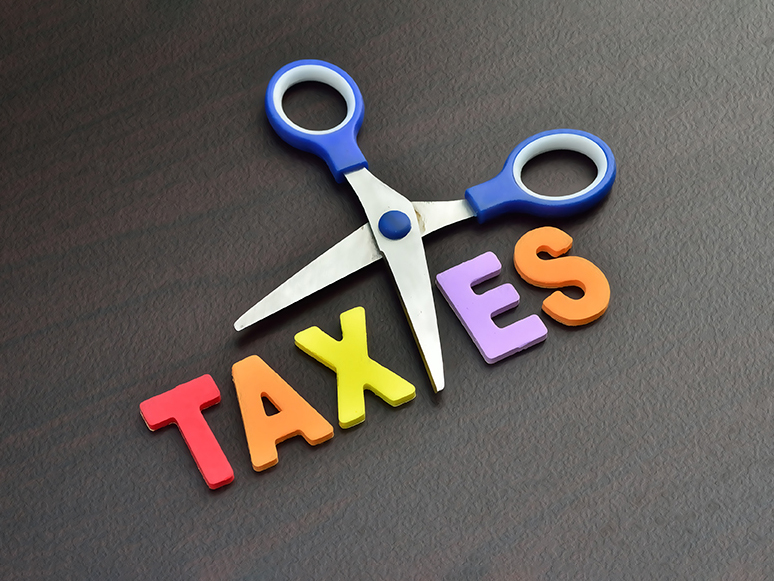logo


30th Sep, 2025

As part of a major review requested by the government to find ways to boost Australia’s productivity and economic resilience, the Productivity Commission has released an interim report that recommends company tax reform aimed at encouraging businesses to invest more and help the economy grow.
The report notes that Australia has a relatively high company tax rate compared to similar countries, and suggests that the current system makes it harder for new and smaller businesses to compete with large established firms. Tax rules on claiming deductions for investments (like equipment or buildings) are complicated, making investment less attractive, and the system tends to favour companies that borrow (use debt) over those that raise money from investors (equity), which can disadvantage smaller businesses.
The Commission’s interim report recommends a new approach to company tax, including:
Importantly, these are only draft recommendations in an interim report. The Productivity Commission is seeking public feedback until 15 September 2025 and will produce a final report with more refined recommendations by the end of the year.
The government would then need to consider, accept and legislate any changes. If adopted, reform measures could be phased in or introduced at once. So, there’s currently no fixed date for when changes would take effect; at the earliest it could be sometime in 2026, depending on government decisions.
Since the report’s release, the government has responded cautiously. Treasurer Jim Chalmers acknowledged the tax reform proposals as “an important input” into policy discussions that would feed into the Economic Reform Roundtable in late August 2025, but hasn’t endorsed or rejected the specific recommendations.
17th Jan, 2025

As the end-of-year season approaches, it’s a great time to celebrate with your employees and show appreciation for their hard work throughout the year. However, it’s essential to understand the potential tax implications, particularly concerning fringe benefits tax (FBT), when planning holiday entertainment or gifts for employees.
FBT is a tax employers pay on certain benefits provided to their employees or employees’ associates (like family members). When planning a festive gathering, such as a Christmas party, it’s crucial to determine if your event might attract FBT. Here are some key points to consider:
When it comes to calculating FBT on entertainment- related benefits, you have a few options:
13th Jul, 2024

Tax time 2024 sees the ATO continuing to turn the spotlight on rental property owners and inflated claims to offset increases in rental income. ATO data shows the majority of rental property owners are continuing to get information in their income tax returns wrong, even with most using a registered tax agent to complete their tax returns. The most common mistakes include overclaimed deductions; inadequate documentation to substantiate claimed expenses; and not understanding what expenses can be claimed and when.
To determine the accuracy of tax returns, the ATO cross-checks data from a range of sources including banks, land title offices, insurance companies, property managers and sharing economy providers. Incomplete documentation and the inability to substantiate claims for expenses and deduction are major causes of errors. Rental property owners need to make sure that they are keeping accurate records and are letting their tax agent (where they have one) know what is going on with their rental property so their return can be prepared correctly.
Not understanding what expenses can be claimed and when, particularly the difference between what can be claimed for repairs or maintenance versus capital expenditure, is the most common mistake rental property owners make on their returns. Deductions can generally only be claimed only to the extent that they are incurred in producing income – which means costs incurred in generating their rental income annually may be claimed for that period.
25th Feb, 2024

With the government finally caving into pressure to change the stage 3 income tax cuts despite its previous promises to keep the already legislated measures, new proposed tax rates have been flagged to come into place from 1 July 2024, largely – in comparison to the legislated measures – benefiting those earning less than $45,000.
The talk about the stage 3 income tax cuts has reached fever pitch in recent weeks. The changes were originally legislated by the previous Coalition government in 2019 with support of the then Labor opposition. During the 2022 election campaign and since coming into government, Prime Minister Anthony Albanese had reassured voters on multiple occasions that the stage 3 tax cuts would remain. However, with the recent inflationary stressors, the government has been under increasing pressure to scrap the already legislated tax cuts in favour of cost-of-living relief for low to middle income earners, which would require the introduction of amending legislation.
As a refresher, the original stage 3 tax cuts are due to come in place from 1 July 2024, and would benefit individuals that earn above $45,000 of taxable income.
From 1 July 2024 under the already legislated stage 3 tax measures, those earning taxable income between $45,000 and $200,000 will be taxed at $5,092 plus 30% of excess over $45,000. In addition, individuals who earn $200,001 and more will taxed at $51,592 plus 45% of excess over $200,000.
According to the latest ABS data, the median earnings of full-time Australian workers are around $1,600 per week, equating to $83,200 per year. Under the current rates a worker on this median wage would be paying $17,507 in tax, and under the already legislated stage 3 rates for the 2024–2025 income year the same worker would be paying $16,552 (a tax saving of $955).
Of course, as critics of the legislated tax cuts have pointed out, those who earn more will be saving more. For example, the same ABS data indicates that individuals earning $2,820 per week are in the 90th percentile of workers in Australia. This figure equates to annual earnings of $146,640. Under the current tax rates a worker on this wage would be paying around $39,323 in tax, and under the already legislated stage 3 tax rates the same worker would only be paying $35,584 (a tax saving of around $3,739).
This effect becomes even more pronounced at the edge of the stage 3 threshold of $200,000. As currently legislated these individuals would experience a tax saving of a whopping $9,075 ($60,667 in tax under the current rates versus $51,592 in 2024–2025 under the stage 3 tax cuts).
Under the government’s most recent proposed changes, those earning between $18,201 and $45,000 would see their tax rate reduced from 19% to 16%. In addition, those who earn between $45,001 and $135,000 would be taxed at the new marginal tax rate of 30%, and the existing 37% marginal rate would be retained but would apply to individuals earning between $135,001 and $190,000. The top marginal rate of 45% would remain for those who earn $190,001 and above.
An average worker earning $83,200 per year will be better off under the government’s proposed changes, paying around $15,748 in tax (versus $16,552 under stage 3 and $17,507 under the current rates), and those in the 90th percentile of earners would be slightly worse off under the proposed changes ($35,594 in tax) compared to stage 3 ($35,584 in tax), but would still be better off than under the current system ($39,323 in tax).
The government will now be working to get the proposed changes passed before 1 July 2024 (when the original stage 3 changes were due to apply).
23rd Sep, 2023

Movement may be afoot on the complex issue of individual tax residency in Australia. In 2019, the Board of Taxation released a report which contained a proposed model for modernising individual residency. The new framework was designed to simplify the tax system and reduce compliance costs for individuals and employers.
The model proposed uses a two-step approach of primary tests and secondary tests. Apart from the government official test, which would replace the Commonwealth superannuation test, the main primary “bright line” test will be the 183-day test, in which a person who is physically present in Australia for 183 days or more in any income year would be considered an Australian tax resident.
One of the secondary tests proposed would require an individual to be physically present in Australia for a minimum of 45 days in an income year before commencing residency, or a maximum of 45 days in an income year before ceasing residency. However, due to various global factors (eg the COVID-19 pandemic), the government is seeking views on whether this 45-day threshold is still appropriate and whether there are any circumstances where days spent in Australia should be disregarded for this threshold.
In addition to the 45-day threshold, the proposed secondary test includes the factor test, which focuses on four specific types of connection an individual may have to Australia. Any individual whose circumstances meet any of the four factors will be deemed to have a stronger connection to Australian than someone who does not.
The Federal Government is now soliciting public feedback on the proposed model before making a decision about whether to proceed with the changes.
11th Apr, 2023

Late in 2022, amendments to the tax law passed Parliament that, among other things, included a measure to allow the ATO to issue a “tax-records education direction” where the Commissioner of Taxation reasonably believes that an entity has failed to comply with one or more specified record-keeping obligations. As an alternative to imposing a financial penalty, such an education direction will require the entity to complete an approved record-keeping course. Successful completion of the course will mean the relevant entity will no longer be liable for a penalty.
According to the ATO, the purpose of the tax-records education direction is to help educate businesses about their tax-related record-keeping obligations. This type of direction will only be issued to entities that are carrying on a business, and will be best suited to small business entities. A direction will most likely be issued where the ATO believes an entity has made a reasonable and genuine attempt to comply with, or had mistakenly believed they were complying with, their tax record-keeping obligations.
Entities that have been or are disengaged from the tax system or deliberately avoiding obligations to keep records will not be eligible for this alternative to penalties. Factors that point to disengagement or deliberate avoidance include poor compliance history, poor engagement with the ATO regarding information requests, deliberate loss or destruction of documents, or fabrication of documents.
To comply with the education direction, a relevant individual to the entity (a director, public officer, partner, etc), must be able to show evidence that they have completed the ATO-approved online record-keeping course by the end of the specified period. Successful completion of the course by the due date means the entity will no longer be liable to a penalty. If the course is not completed by the due date, the entity will be liable to a penalty of up to 20 penalty units (currently $5,500).